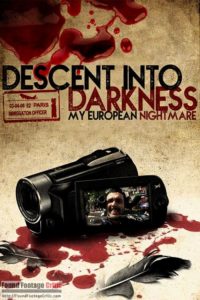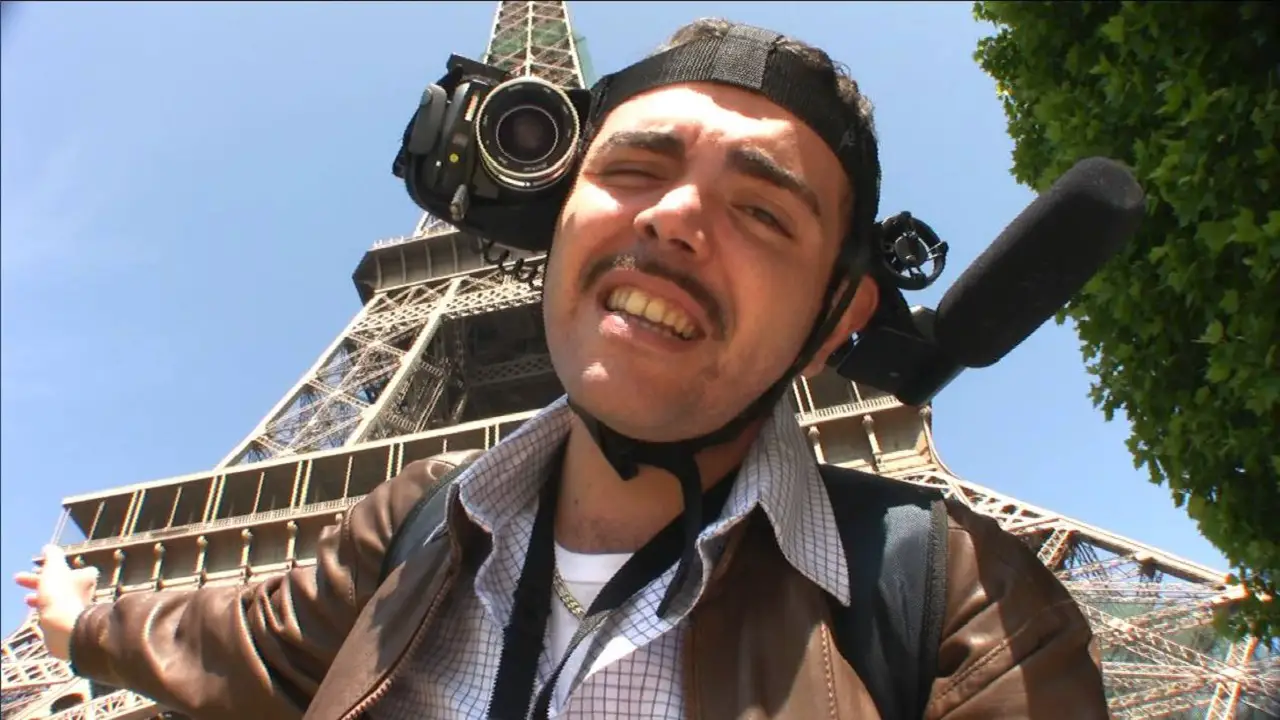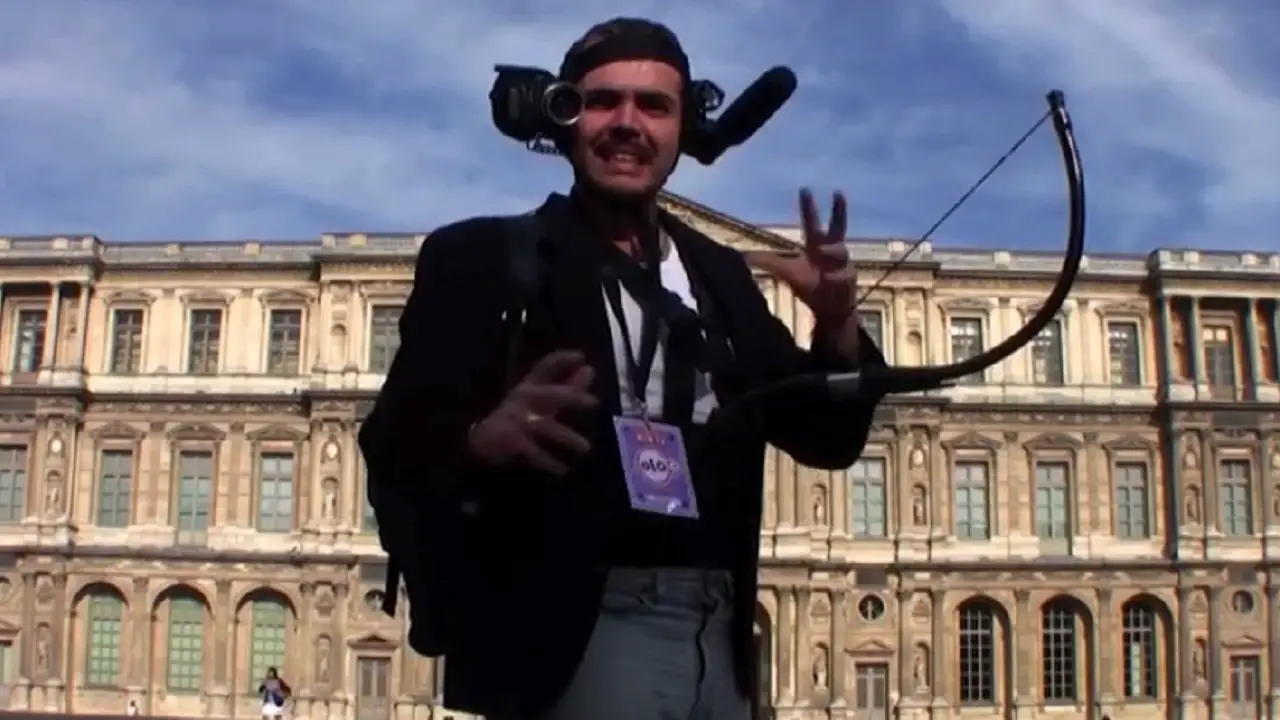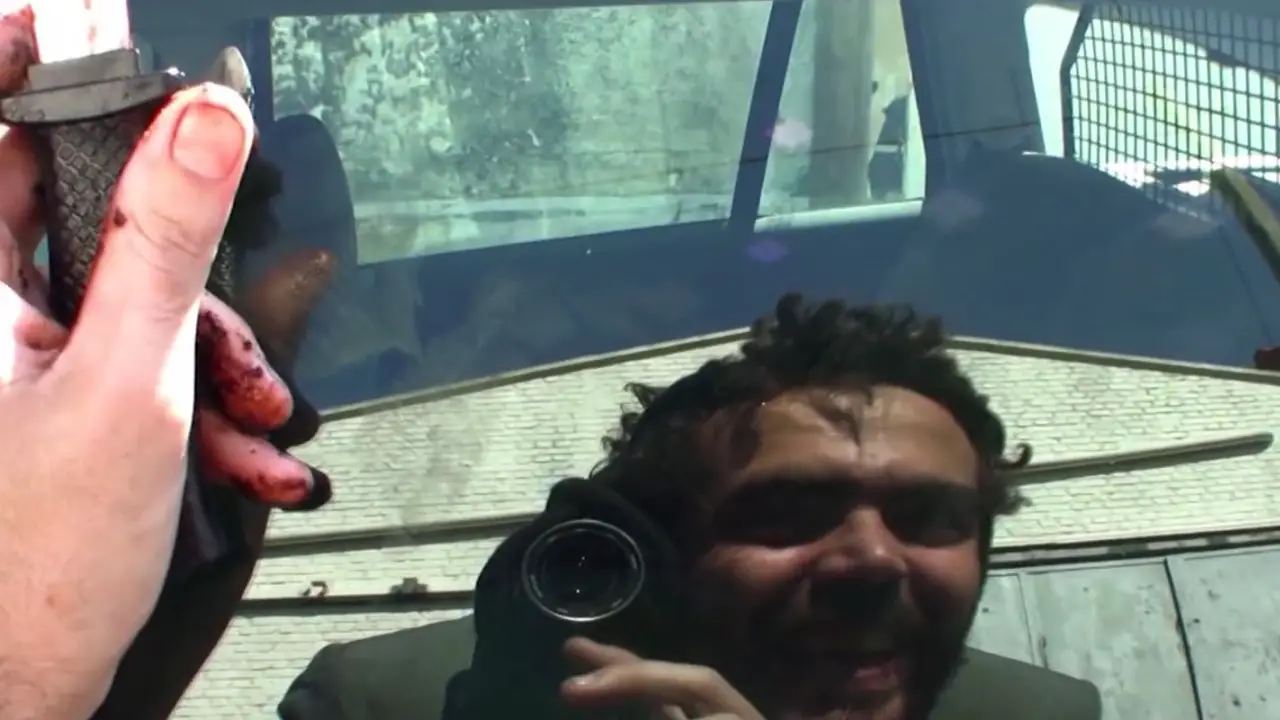 “Descent into Darkness: My European Nightmare” is a found-footage film directed by Rafael Cherkaski, following the model of a documentary in the process of being made. It concerns a television cameraman named Sorgoi Prakov (played by Cherkaski) from Sdorvie, a fictional small country on the border of Russia, who’s travelling through Europe with hand-held cameras to make a “tourist” travelogue for his TV station back home about the supposed “European Dream” (which is akin to the “American Dream”).
“Descent into Darkness: My European Nightmare” is a found-footage film directed by Rafael Cherkaski, following the model of a documentary in the process of being made. It concerns a television cameraman named Sorgoi Prakov (played by Cherkaski) from Sdorvie, a fictional small country on the border of Russia, who’s travelling through Europe with hand-held cameras to make a “tourist” travelogue for his TV station back home about the supposed “European Dream” (which is akin to the “American Dream”).
The film is told entirely from the point of view of Sorgoi Prakov’s cameras, one mounted on his head and another usually on a mount/arm attached to his chest and facing back at his face (although sometimes it’s in his hand, or placed on the ground while he talks in front of it). He intends to start in Paris and travel in a heart-shaped circle to various European capitals, talking to tourists and locals and capturing various cultural landmarks and sites for his documentary. After this short set-up, the film starts with a title card “My European Dream.”
But things do not go as planned. Prakov is denied access to places like the Center Pompidou and the Louvre because of his camera rig (“As if tourists were terrorists.”). When he talks to passers-by on the streets of Paris about the “European dream,” they dismiss him, don’t understand, or think he’s crazy. With his dopey grin and thin mustache and silly head-gear, Prakov comes across as a Slavic version of Mr. Bean in the early scenes.
His attempts to engage with tourists fail to elicit results, and at one point his camera is almost stolen. He goes to parties, gets drunk a lot, stumbles around, and is constantly bullied, robbed and beaten up, all undermining his idea there is any true “European dream” to capture.
Descent into Darkness: My European Nightmare is a slow burn that will reward patient viewers in the mind-bending final thirty minutes of the film.
He doesn’t even get out of Paris before he’s already out of money – and his producers aren’t answering his calls or emails for more funds. Prakov falls into an existential funk and becomes homeless himself, finally living on the streets, disappointed and antagonistic with everyone he meets and picking fights.
One drunken night, he stabs a homeless man and lights him on fire, filming himself the whole time. He’s soon breaking into houses and stalking locals, and has decided to change the focus of his “documentary,” to captures what he decides is the “European nightmare.” Prakov crosses over the edge into the realm of pure insanity, and what follows is a hellish nightmare for everyone he encounters.

Found Footage Purity and Cinematography
For the most part the footage is believable as being captured by Prakov as he films his descent into his “nightmare.” There are montages early on in which the action is sped up with music overlaid, and throughout the film there are cuts from the POV of one camera to the POV of the second camera, providing the viewer proper coverage of what’s going on. These edited scenes are explained by the multiple instances where Prakov says that he’s using his laptop each evening to edit the footage from each day of shooting. The film is essentially edited on a rolling basis by Prakov himself as he captures footage.
The only indication this is a “finished” documentary is the title card at the beginning, although the video image even begins to break down and pixelate towards the last 10 minutes. It’s a somewhat obvious visual echo of the lead character figuratively falling apart.
Acting
The acting is very good for what feels like a film mostly on the fly. Cherkaski as the lead Sorgoi Prakov is believably guileless as well as annoying at the beginning and we totally believe his descent into frustration, drunkenness and finally madness. The extras, the tourists and locals who talk to Prakov (and to his the camera) all are believable.
Plot & Filming Reason
The plot (and reason for filming) is solid, the idea that someone who goes out to shoot a documentary for one reason ends up finding a completely different story a strong one. The film is a slow burn, and the first horrible thing that really happens (the murder of the homeless man) is 50 minutes in, although there’s a good amount of incident and interesting events leading up to it. The interplay between a filmmaker intending to simply “observe” and his increasing involvement in the story, as well as staging twisted and violent events for the sake of his “documentary,” was done better back in 1992 in Man Bites Dog (1992), and I also get a sense Henry: Portrait of a Serial Killer (1986) influenced Cherkaski here. The idea works well for this found-footage treatment.
There is also a taste of French extreme horror at the back end of the film, and if that is not your cup of tea, proceed accordingly.
While looking very amateurish at the beginning, it’s intentional and builds to an effective climax. Descent into Darkness: My European Nightmare is a slow burn that will reward patient viewers in the mind-bending final thirty minutes of the film.






1 Comment
Great analysis Roger!